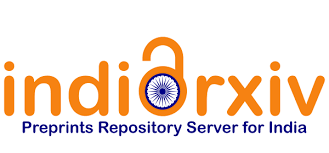
Blossoming Knowledge: In the world of Open Knowledge, Ideas bloom and Flourish
In an era defined by rapid technological advancements and the constant flow of information, knowledge management has emerged as a critical discipline for organizations seeking to harness the power of their collective intelligence. However, the traditional approach to knowledge management, characterized by centralized repositories and controlled access, is undergoing a significant transformation. Open Knowledge Management (OKM) is at the forefront of this revolution, promising to unlock new opportunities for innovation, collaboration, and information sharing. In this article, we will delve into the concept of Open Knowledge Management, its principles, benefits, and how it is shaping the future of knowledge within organizations.
WHAT IS OPEN KNOWLEDGE MANAGEMENT?
Open Knowledge Management (OKM) is a modern approach to managing an organization’s knowledge assets by promoting open access, collaboration, and sharing of information. Unlike traditional knowledge management, which often relies on rigid hierarchies and restricted access, OKM embraces transparency and inclusivity. It encourages employees to freely contribute, access, and build upon the organization’s collective knowledge.
At the core of OKM is the idea that knowledge is a valuable resource that should not be hoarded or hidden within silos. Instead, it should be made accessible to everyone who can benefit from it. This open and democratic approach to knowledge management fosters a culture of continuous learning and innovation.
PRINCIPLES OF OPEN KNOWLEDGE MANAGEMENT
- Open Access: OKM encourages unrestricted access to knowledge resources. This means that information is readily available to all employees, regardless of their department or role within the organization.
- Collaboration: OKM promotes collaboration and knowledge sharing among employees. It emphasizes the importance of collective intelligence, where individuals can contribute their expertise to solve problems and generate new ideas.
- Transparency: Openness and transparency are fundamental principles of OKM. Organizations implementing OKM practices often have open communication channels and platforms where information is shared openly.
- Feedback Loop: OKM encourages a continuous feedback loop. Employees are encouraged to provide feedback on knowledge resources, leading to constant improvement and refinement of the organization’s knowledge base.
- Integration: OKM seeks to integrate knowledge management into the daily workflow of employees. Knowledge resources are seamlessly incorporated into processes, making it easier for employees to access relevant information when needed.
CHALLENGES AND CONSIDERATIONS
While Open Knowledge Management offers numerous benefits, it also comes with its own set of challenges. Organizations must carefully consider issues related to data security, privacy, and intellectual property rights. Implementing OKM requires a cultural shift, and some employees may resist change. It’s crucial to provide training and support to help employees adapt to the new way of working.
CASE STUDIES AND USE CASES
Wikipedia: A Beacon of Open Knowledge Management
Wikipedia, often referred to as the “free encyclopedia,” stands as a shining example of the principles and possibilities of Open Knowledge Management (OKM). It has disrupted the traditional notion of knowledge repositories and revolutionized how knowledge is created, curated, and disseminated in the digital age.
A Collaborative Knowledge Ecosystem – At the heart of Wikipedia’s success is its commitment to openness and collaboration. Unlike traditional encyclopedias that relied on a select group of experts to create and edit articles, Wikipedia’s ecosystem is built upon a vast network of contributors from around the globe. These contributors, often referred to as “Wikipedians,” come from diverse backgrounds, cultures, and expertise areas. This diverse pool of knowledge and perspectives results in a richness and depth of content that would be difficult to achieve through a closed, centralized system.
Free and Accessible Information – One of the fundamental principles of OKM, as exemplified by Wikipedia, is the notion of open access. Wikipedia is freely accessible to anyone with an internet connection, eliminating barriers to knowledge acquisition that may exist in more traditional educational settings or paid subscription models. This openness has democratized access to information, making it available to millions worldwide, including those in regions with limited access to educational resources.
Continuous Evolution and Improvement – Wikipedia is a living, breathing entity. Its content is not static; rather, it is in a state of constant evolution. This continuous improvement is made possible by the OKM principle of a feedback loop. Wikipedians are encouraged to review and update articles regularly. This feedback mechanism, coupled with an ethos of transparency, ensures that errors are corrected, and new information is incorporated promptly.
Challenges and Controversies – While Wikipedia has demonstrated the immense potential of OKM, it is not without its challenges and controversies. Some of these include:
- Reliability: Critics have raised concerns about the reliability of Wikipedia due to its open nature. Since anyone can edit articles, there is the potential for vandalism, bias, or inaccurate information to be introduced. However, Wikipedia’s community of dedicated editors works tirelessly to maintain high standards of accuracy and neutrality.
- Edit Wars: In some cases, passionate contributors may engage in edit wars, where conflicting edits and viewpoints lead to disputes. Wikipedia’s policies and dispute resolution mechanisms aim to address these issues, but they can be complex and time-consuming.
- Notability and Inclusion: Deciding what topics and subjects should be included in Wikipedia can be subjective. Wikipedia’s notability guidelines seek to address this issue, but determining the significance of a topic can be challenging.
- Diversity of Contributors: Wikipedia acknowledges the need for greater diversity among its contributors to reflect a wider range of perspectives and knowledge. Efforts to address this include initiatives to attract underrepresented groups to contribute to the platform.
NASA’s Open Data Initiative: Fostering Innovation in Space Exploration and Scientific Discovery
NASA, the United States’ premier space agency, has long been at the forefront of scientific research and space exploration. In recent years, NASA has taken a bold step towards embracing Open Knowledge Management (OKM) through its Open Data Initiative. This initiative exemplifies how open access to data can catalyze innovation in the fields of space exploration and scientific discovery.
Open Access to Vast Data Resources – NASA’s Open Data Initiative revolves around the idea that knowledge and data are valuable resources that should be shared openly and transparently. It involves making a vast treasure trove of space-related data accessible to researchers, scientists, students, and the general public. This data encompasses a wide range of information, including satellite imagery, astronomical observations, spacecraft telemetry, and planetary exploration data.
Empowering Researchers and Scientists – One of the primary goals of NASA’s Open Data Initiative is to empower researchers and scientists worldwide. By providing unrestricted access to their extensive datasets, NASA enables experts in various fields to conduct ground-breaking research without the barriers of data acquisition and costs. This democratization of data access significantly accelerates the pace of scientific discovery.
Fuelling Innovation – The initiative serves as a catalyst for innovation in multiple ways:
- Interdisciplinary Collaboration: Open access to NASA’s data encourages interdisciplinary collaboration. Researchers from diverse backgrounds can combine their expertise and leverage NASA’s datasets to address complex scientific questions that span multiple disciplines.
- Citizen Science: NASA’s commitment to open data extends to citizen scientists and the general public. Individuals with a passion for space and science can actively participate in research projects, contributing valuable insights and findings. This engagement not only promotes scientific literacy but also uncovers new perspectives on existing data.
- Educational Opportunities: Educational institutions at all levels benefit from NASA’s Open Data Initiative. Students and educators can access real-world data for classroom activities and research projects. This hands-on experience enhances science education and inspires the next generation of scientists and engineers.
- Start-ups and Entrepreneurs: The availability of NASA’s data fuels innovation in the commercial sector. Start-ups and entrepreneurs can develop new applications, services, and products based on NASA’s data, leading to economic growth and job creation.
Applications and Impact – NASA’s Open Data Initiative has already yielded impressive results
- Scientific Discoveries: Researchers have made numerous scientific discoveries using NASA’s open data, from the exploration of exoplanets to the study of Earth’s climate.
- Space Exploration: The initiative has played a pivotal role in planning and executing space missions. Data from past missions informs future mission planning and enhances the chances of mission success.
- Technology Advancements: The open data has led to the development of innovative technologies and tools for data analysis, visualization, and interpretation.
- Public Engagement: NASA’s open approach fosters public engagement and enthusiasm for space exploration and science. It has a global reach, inspiring people worldwide.
Challenges and Considerations – While NASA’s Open Data Initiative is a resounding success, it also comes with challenges. These include ensuring data accuracy and quality, protecting sensitive information, and managing the sheer volume of data generated by NASA’s missions. Additionally, the initiative requires ongoing maintenance and updates to remain relevant and effective.
CONCLUSION
NASA’s Open Data Initiative and Wikipedia’s journey as a prime example of Open Knowledge Management both serve as compelling illustrations of the transformative potential of Open Knowledge Management (OKM). These real-world examples demonstrate how embracing principles of openness, collaboration, and transparency can revolutionize the way organizations manage and leverage their knowledge assets.
NASA’s Open Data Initiative stands as a testament to the power of OKM in the realm of scientific research and space exploration. By generously sharing its extensive collection of space-related data, NASA has unlocked opportunities for global collaboration, innovation, and discovery. Beyond its contributions to our understanding of the cosmos, NASA’s initiative underscores the broader benefits of open access to knowledge and data, fueling progress and innovation across diverse fields. It serves as an inspiring model for organizations and institutions seeking to harness the collective intelligence of the global community for the betterment of science and society.
Wikipedia, on the other hand, serves as a prime example of collective intelligence, open access, and collaborative knowledge creation. It has redefined our perception of knowledge repositories, showcasing that a decentralized, community-driven approach can yield a comprehensive and constantly evolving source of knowledge accessible to millions worldwide. While facing challenges and controversies, Wikipedia continues to shine as a beacon of open knowledge, embodying principles of transparency, collaboration, and accessibility. It inspires organizations and institutions seeking to harness the potential of OKM in the digital age, where the collective wisdom of the crowd shapes the future of knowledge.
In conclusion, Open Knowledge Management is a transformative approach with the potential to revolutionize knowledge asset management for organizations. By embracing principles of openness, collaboration, and transparency, organizations can unlock new avenues for innovation, enhance decision-making processes, and gain a competitive edge in today’s ever-evolving business landscape. As technology continues to advance, OKM remains a key driver of organizational success, ensuring that knowledge remains a valuable, accessible resource for all. The case studies and use cases provided illustrate the diverse applications and benefits of OKM across different domains and industries, emphasizing its relevance and potential impact in the modern world.











